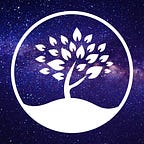Vedas: A Brief Introduction
The Vedas are considered as the earliest literacy records of Indo — Aryan civilization. They are considered among the oldest religious scriptures present in the world. They can be defined as the nature of the Divine. Veda simply means “Knowledge”. Veda is a Sanskrit word from the root “Vid”, which means finding, knowing, acquiring, or understanding. What you acquire or understand is knowledge. The term Veda means “knowledge”.
The Vedas are the most ancient yogic texts. It was originally written in Sanskrit, they are considered to have no author. Rather, it is believed that the texts were revealed by Devta’s to the ancient sages who passed them on orally to their disciples, for many years until they were written down on palm leaves around 500 BCE.
The Vedas are also called sruti in Sanskrit, which means “what is heard” (as opposed to smrti, meaning “what is remembered”). Some sources state that Brahma is the creator of the Vedas.
Who wrote Vedas
The Vedas point out to be originated in the Indian Sub-continent and its written form origin dates back to 1600 BCE. The Rig Veda, the oldest of 4 Vedas is said to be authored in and around 1600 BCE.
However, no definite date can be ascribed to the composition of the Vedas as the generational descendant of the texts in Vedic periods was by literary oral tradition, which was then a precise and elaborate technique.
As noted, the adherents of Sanatan Dharma (Hinduism) believes that Vedas have always existed.
The Four Vedas
There are four Vedas: Rig Veda, Yajur Veda, Sama Veda, and Atharva Veda, and all of them together are called as ‘Chaturveda’. The Rig Veda serves as the principal one and all three but the Arthaveda agree with one another in form, language, and content.
Each Veda has been subclassified into four major text types — The Samhitas, the most ancient layer of text in the Vedas, consisting of mantras, hymns, prayers, and benedictions which has in literary terms put together or joined the other three texts; the Aranyakas which constitute the philosophy behind the ritual sacrifice, the Brahmanas which inturn has the commentary on hymns of four Vedas and the Upasanas, the one that focuses on worship.
Basis of Vedas
The ideas, teachings and practices described in the Vedas formed the basis of the six major schools — Nyaya, Vaisheshika, Samkhya, Yoga, Mīmāṃsā and Vedanta.
- The Veda refers to a collection of Vedic mantras in Vedic Sanskrit.
- Vedas are eternal in nature and hence self-evidence.
- Veda mantra is not man-made, hence has no scope for error.
- Mantras are deep spiritual truths and occurred phenomena revealed by the Devatas to the rishis.
- About 5000 years ago, Vedas were written and categorised by sage Vyasa.
- Vedas are categorised into Rig Veda, Yajur Veda, Sama Veda and Atharva Veda.
- There were around 1131 Shakas, out of which a handful of them are existing today.
Modern Science On Vedas
Stephen Hawking the renowned scientist and cosmologist had emphatically said on record that our Vedas might have a theory which is superior to Einstein’s theory of e=mc². He had on record said that there is a possibility that Vedas have a better formula than the one given by Einstein.
For instance, a lecture in the 102nd Indian Science Congress held in Mumbai examined ancient aviation technology in the Vedas and claimed that aeroplanes existed in India 7,000 years ago and they travelled from one country to another.
Conclusion
The Vedas, especially the Upanishads, would eventually form the foundational understanding of Sanatan Dharma and provide direction and purpose in the lives of adherents. It came to be understood that there was a single entity, Brahman, who not only created existence but was existence itself.
As this entity was too great to be comprehended by human beings, he appeared as avatars such Brahma (the creator), Vishnu (the preserver) and Shiva (the destroyer) as well as a host of other deities all of which were Brahman.
The purpose of a human life was to recognize one’s higher self (the Atman) and perform the dharma (duty) one had been given with the proper karma (action) to free one’s self from the cycle of rebirth and death (samsara) which was characterized by the suffering and loss one experienced in the physical world. Once an individual had broken these bonds, that person’s Atman returned to Brahman and eternal peace.
In the coming stories, I will be describing all four Vedas in detail, stay tuned for amazing stories.
